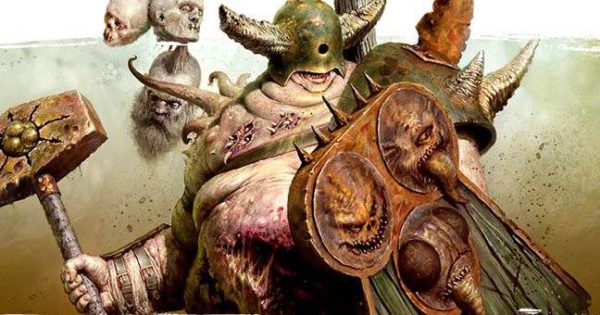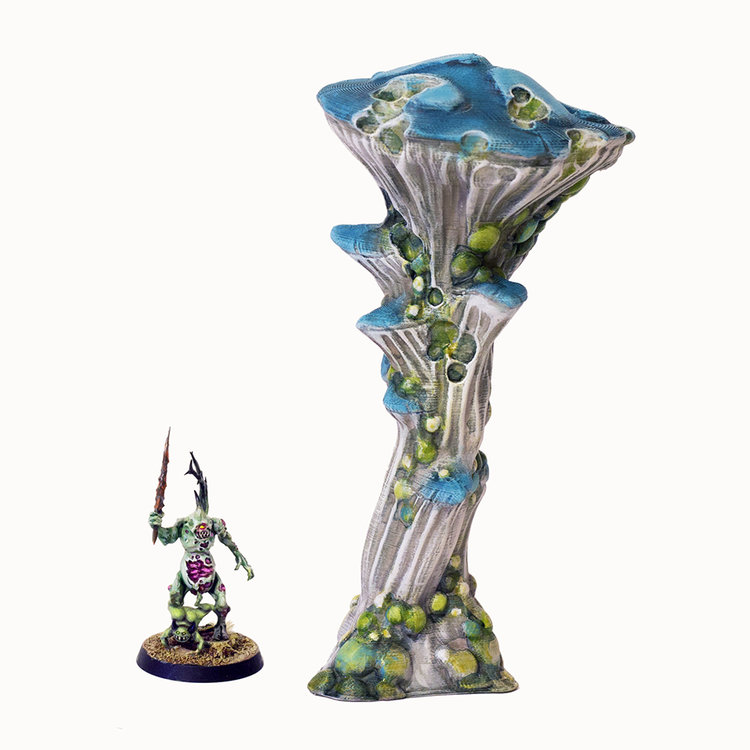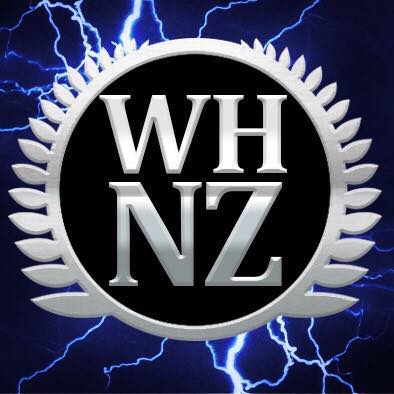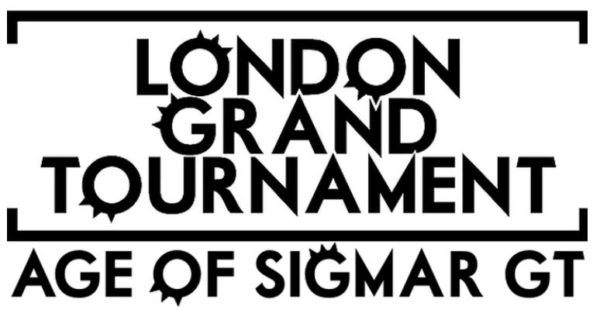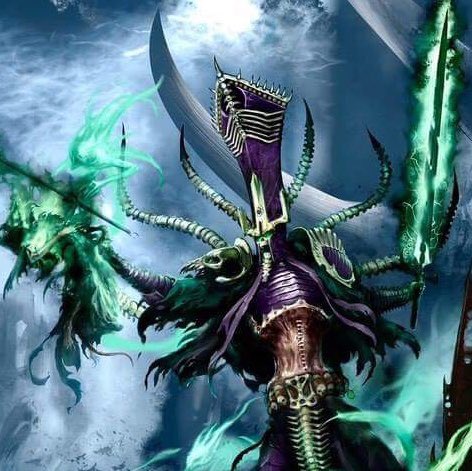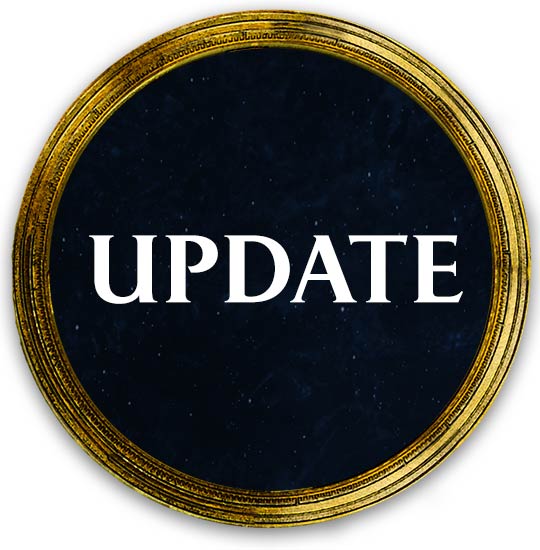Hello! In today’s show I give my initial impressions and review of Battletome: Legions of Nagash! I hope to return to the army in a few months for a more detailed Legions of Nagash review once we have all had a chance to playtest and shake the kinks out.
[podbean resource=”episode=ijcyg-8820a6″ type=”audio-rectangle” height=”100″ skin=”2″ btn-skin=”105″ share=”1″ fonts=”Helvetica” auto=”0″ download=”0″ rtl=”0″]
The battletome fundamentally changes the Death grand alliance and provides incremental upgrades across the board. There are a number of changes which seem to return the Death grand alliance towards its narrative roots of strong, but fragile, characters, surrounded by an undying and regenerating rabble.
What is clear after a few days with the book, is that there are few stand-out tier 1 unit choices or army builds – there is plenty of choice here. The army is going to reward clever list-building and generalship and, if I was to guess, sit in the tier 2 range of armies.
In this show, I’ll cover:
- the structure of the army: the Legions
- Allegiance Abilities
- Gravesites
- the Lores of Death
- Summoning
- the new Battalions
- some warscroll changes and
- some potential army builds
The Legions of Nagash
The Legions of Nagash battletome covers rules for six different allegiances:
- Grand Host of Nagash (Nagash and friends)
- Legion of Sacrament (Arkhan and casting)
- Legion of Blood (Neferata and her attendants)
- Legion of Night (Mannfred and crazy choppy)
- Soulblight (Vamps, vamps and vamps)
- Death Grand Alliance (the hodge podge / everything else)
If you take Nagash, you have to run the Grand Host, he can’t be chosen in any of the other Legions. In turn, the other Mortarchs must be the generals in their respective Legions (if you have them in the army) – no appointing a Necromancer or Wight King to deputise for them. You can run the Legions without their Mortarchs if you wish.
The Legions only include models from the Battletome. So you won’t see any Tomb Kings, Mournguls (who are relegated to Death Grand Alliance) and Flesh-Eaters who stay with their own battletome. Nighthaunt remain in General’s Handbook 2017.
Each of the Legions have Flesh-Eater Courts as their only ally. If you run Soulblight, you get more choice in that you can ally with Deadwalkers, Deathlords, Deathrattle, Deathmages, and Nighthaunt.
Allegiance Abilities
Each of the 6 allegiances have their own set of six command traits and six unique artifacts (unlike the Maggotkin of Nurgle or Disciples of Tzeentch books, there are no duplicate or shared command traits and artefacts). As you would expect, these are all tied to the theme of the army
The Grand Host and the three Legions share two battle traits, an ability and a command ability:
- Deathless Minions – roll a dice each time you allocate a wound or mortal wound to a firendly DEATH unit within 6″ of your general or another friendly DEATH HERO. On a 6+ the wound is negated.
- Magic: All wizards know an extra spell from the Lores of the Dead
- The Unquiet Dead – the Legions get beneficial terrain called gravesites (more on these later)
- Command Ability – choose a gravesite within 9″ of the general. You may return a friendly Summonable unit that has been destroyed to the battlefield and set it up wholly within 9″ of that gravesite and more than 9″ away from enemy models – I suspect this won”t see much use as you still need to pay reinforcement points for the unit, but there may be some situations where this gets you out of a pinch.
The Grand Host
With the Grand Host, Nagash can select three further spells from the Lores of the Dead. Also, any Morghast in the Grand Host get an extra Attack for all their melee weapons. Finally, in your hero phase, you may roll a dice for each friendly Grand Host Summonable unit on the battlefield. On a 5+ you can heal up to D3 wounds that have been allocated to it. For units with a Wounds characteristic of 1 return 1 slain model to the unit for each wound that would have been healed.
Grave Guard are battleline in a Grand Host army and Morghast are also battleline if you have Nagash as your general.
For each of the allegiances, I’m going to pick a few of my favourite command traits and artefacts. I won’t go through the full lists (buy the battletome for that).
Command Traits
- Bane of the Living – re-roll wound rolls of 1 for the general for attacks against non-DEATH units.
- Lord of Nagashizzar – add 1 attack for melee weapons of friendly Deathrattle units within 6″
Artefacts
- Grave-sand Timeglass: useful for sniping away enemy heroes anywhere on the battlefield
- Ossific Diadem: roll a dice each time you allocate a wound or mortal wound to a friendly Deathrattle model within 12″ of the bearer – on a 6+ the wound is negated.
- Amethyst Shard: once per battle, in hero phase, fuse the shard with the bearer’s melee weapon – add 1 to hit and wound rolls for that weapon until the next hero phase.
The Legion of Sacrament
The Legion of Sacrament is your main choice for a magic heavy army (outside Nagash). Led by Arkhan (with his extra casting), several Necromancers and a Mortis Engine you will pump out a lot of spells. The most beneficial battle trait is that all your wizards have +1 to cast. You also have the possibility of returning destroyed summonable units to the battlefield.
Command trait
- Dark Acolyte: a wizard may take another spell from the Lores of the Dead.
- Mastery of Death: At the start of your hero phase, all friendly Death units within 6″ of the general may make an immediate move up to 3″.
Artefacts
- Shroud of Darkness: subtract 1 from all hit rolls for attacks targeting the bearer in the shooting phase if the attacking unit is within 8″. Subtract 2 from hit rolls from further away.
- Wristbands of Black Gold: Roll a dice each time you allocate a wound or mortal wound to the bearer in the shooting phase. On a 4+ the wound is negated.
The Legion of Blood
The Legion of Blood are Neferata’s court and its traits revolve around getting up close and personal with the enemy. The main battle traits are that enemy units within 6″ of your army are -1 bravery. You also get +1 attack for your Vampire Lords and Blood Knights.
Command traits
- Swift Strikes: Each time you make a hit roll of 6+ in the combat phase for the general, you can make an additional hit roll for the same weapon against the same target.
- Aristocracy of Blood: Re-roll failed charge rolls for friendly Soulblight units within 9″ of the general at the start of the charge phase.
- Walking Death : if the hit roll for an attack made with one of the general’s melee weapons is a 6+, then the attack causes a number of mortal wounds equal to its Damage characteristic (rather than needing to roll to wound etc).
- Sanguine Blur: Add 2″ to the general’s move characteristic. In addition you can re-roll failed charges for the general.
Artefacts
- Soulbound garments: re-roll save rolls of 1 for the bearer.
- Orb of Enchantment: once per battle, at the start of the combat phase, you can pick an enemy hero within 3″ of the bearer. In that combat phase, that hero may not pile in, attack or use abilities.
The Legion of Night
The Legion of Night is Mannfred and his ambushing forces striking from Darkness. The main battle trait is that you can set up to 3 units in ambush, rather than on the battlefield at the start of the game. At the end of any of your movement phases, you can set up any of the units in ambush wholly within 6″ of any battlefield edge and more than 9″ away from any enemy models. The second trait is that you can add 1 to save rolls for Deathrattle units wholly within your territory (very useful for camping on your home objective).
Command traits
- Swift Form: add 2″ to the general’s Move characteristic, and 2″ to all runs by the general.
- Unbending will: Friendly units Legion of Night units within 12″ can re-roll failed battleshock tests.
- Merciless Hunter: re-roll wound rolls of 1 for the general.
Artefacts
- Vial of the Pure Blood: once per battle, in your hero phase, you can declare that the bearer will drink the bial. You can add 1 to hit and wound rolls for the bearer until the next hero phase.
- Shard of Night: subtract 1 from the hit rolls of all attacks that target the bearer in the shooting phase [no use against hero phase shooting though….].
Soulblight and Death Grand Alliance
I’m not going to spend much time delving into the last two allegiances. Both have just been updated to deal with the Summonable mechanic and do not get to access gravesites and the other benefits of the Legions of Nagash allegiances. Soulblight gain access to the Lore of Vampires but otherwise keep their Deathless Thralls battle trait, their bloodlines, six command traits and six artefacts. Death Grand Alliance keeps Deathless Minions, six traits and six artefacts. The Grand Alliance is the only way that you can mix in Nighthaunt units or a Mourngul etc.
The Legions of Nagash have access to two spell lores – the Lore of the Deathmages (for Deathmages…) and the Lore of the Vampires (for vampires….). The Deathlords (Nagash and the Mortarchs) can access spells from either lore.
Both lores benefit from the Locus of Shyish – a rule that says if the unmodified casting roll for a spell is a 9+ (and the spell is not unbound) then you resolve the effects of the spell twice. You can choose the same unit, or a different target. Because it is the unmodified roll that counts, you won’t be building a list solely around this ability, but it will certainly be a useful boon in the 27% of rolls it goes off. You can expect to have it work a few times each game.
Each lore has its own character. The Deathmages lore is all about debuffing the enemy at a 12-18″ range. Some particular standouts are:
- Overwhelming Dread – cast on a 5 – pick a visible enemy unit within 18″, until your next hero phase that unit is -1 to hit and -1 bravery. Very useful against anything which receives benefits on 6s to hit.
- Fading Vigour – an enemy unit loses an attack from their melee weapons (down to a minimum of 1) and can only roll 1 dice when charging.
- Soul Harvest (for a combat Nagash) – cast on a 7 – every enemy unit within 3″ takes D3 mortal wounds. For each mortal wound that was allocated, and not negated, roll a dice. On a 5+ the caster heals a wound.
The Lore of Vampires is more short range and offensive. My current favourite is the Amaranthine Orb – you draw a straight line from the caster for 12″ and each unit under it suffers D6 mortal wounds on a 4+. I suspect this will be a favourite on Arkhan given that he gives spells an extra 6″ range. The Soulpike may also get some use.
Gravesites
As is the way with Sylvaneth and Maggotkin of Nurgle, the Legions of Nagash have their own terrain pieces which interract with the army. For Legions of Nagash, these are gravesites. Gravesites have benefits for both summoning and healing.
After territories have been determined, but before any units have been set up, you may pick up to 2 points in your territory and up to 2 points anywhere on the battlefield to be gravesites. There is no set size for gravesites, but Games Workshop suggest a suitable marker (perhaps a modified base, or one of the little chapels from the Sigmarite Mausoleum kit).
First up, you have flexibility in where you place 2 of your gravesites. Depending on the scenario, you could choose to place one or two of these:
- in enemy territory near an objective, in order to require your opponent to divert resources to that part of the board; or
- in your own territory if you want to maximise the defensive benefits of overlapping healing.
Summoning
Instead of setting up a Summonable unit on the battlefield, you can place it to one side and say that it is set up in the grave. You can do this with as many units as you wish.
At the end of your movement phase, for each DEATH HERO within 9″ of a gravesite, you may pick a single unit in the grave and set it up wholly within 9″ of that gravesite and more than 9″ from any enemy models. If a unit is still in the grave at the end of the battle, it is considered to be slain.
Given the restrictions on placing models, I don’t see you leaving large units in reserve in summoning. Much more likely to see smaller units of 10 Grave Guard or late game objective capturers such as dire wolves. This will be especially important in scenarios where you get additional points for holding objectives in later turns.
Healing
Invigorating Aura: At the start of your hero phase, pick a friendly summonable unit within 9″ of this gravesite. You can either heal D3 wounds that have been allocated to it or, if no wounds are currently allocated to the unit, you may return a number of slain models to it that have a combined Wounds characteristic equal to or less than the roll of a D3.
This is likely to be the greatest benefit of the gravesites. Four gravesites in your own territory could restore 4D3 wounds/slain models to your grave guard or skeleton units (keeping them at full size and maximum output for those skeletons).
Summoning
The Legions of Nagash battletome brings a large overhaul to the summoning rules for Death.
Previously, you could set aside a number of reinforcement points and summon the units you needed when you needed them. The ultimate toolkit to face your opponent’s army (as long as you had the models with you).
Now you have to name the units you intend to summon on your army list (and pay the points for them in your list). The toolkit is gone.
You can also only summon units with the Summonable keyword. These are Bat Swarms, Fell bats, Zombies, Black Knights, Grave Guard, Skeleton Warriors, Hexwraiths, Spirit Hosts and Dire Wolves.
In exchange, you no longer have to cast a spell in order to bring the unit on to the table. You need to have a hero within 9″ of the gravesites and set the unit up wholly within 9″ of that site.
Warscroll Battalions
The warscroll battalions are themed around similar lines to the Legions of Nagash.
I suspect the First Cohort will see the most play initially. This battalion is 160 points, and requires Nagash, a unit of Morghast and 3 units of Deathrattle. Once you have filled out those Deathrattle units you won’t have many points left, but you do get a one-drop and abilities to transfer wounds from Nagash to the Morghast and stronger healing of your units. The army will revolve around Nagash’s output.
The Lords of Sacrament is your main magic-heavy choice. The battalion requires Arkhan, two Necromancers (a powerful choice) and a Mortis Engine. Your wizards can cast an extra spell if they are within 6″ of the Mortis Engine. You can also add 1 to save rolls for Arkhan and the Necromancers if they are within 6″ of the Mortis Engine.
The Deathmarch gives you extra movement, but includes a unit of Black Knights (which is a bit of tax).
If you fancy a crazy combat choice, try the Castellans of the Crimson Keep.
Warscrolls
Right, on to the warscroll changes. There have been quite a few little changes.
The largest change is that most heroes now have the Deathly Invocation ability which allows them to heal Summonable units. The number of units that can be healed, and the range of the ability varies depending on the strength of the hero. Nagash can heal five units anywhere on the battlefield, Necromancers are 2 units within 6″ for example. All this healing stacks so you’ll be quickly returning large numbers of models to the table.
As a result, banners in units now don’t provide healing, but instead provide a bravery debuff to enemy units within 6″ of the banner (so expect units now to have multiple banners in them). While large battleline units are improved by this change (and skeletons are now cheaper), units like Blood Knights can no longer be healed or returned (although they get an extra attack to ameliorate the loss).
Zombie dragons have now been brought in line with the zombie dragons in the Flesh-Eater Courts battletome. No more confusion about which scroll is in play.
Terrorgheists have also received a significant buff to their Gaping Maw ability – Each time you make a hit roll of 6+ for this model’s Fanged Maw, the attack is automatically successful. Determine damage normally (do not make a wound or save roll) but increase the weapon’s Damage characteristic to 6. Try to pair this with Damned terrain and other ways to buff the hit roll.
There are two new warscrolls – Prince Vhodrai (special character Vampire Lord on Zombie Dragon) and a Bloodseeker Palanquin (combination of the existing big kits). I suspect we will see a lot of Prince Vhodrai, as I’ll touch on more below.
Possible army builds
And finally, what are we likely to see on the tabletop. I’m sure I’ll come back to revisit this section in the next week or so, but here are some initial thoughts:
- Vampire Lord on Zombie Dragon – a popular choice for people who don’t want to run Nagash or Mortarchs. 14 wounds, 3+ save, can move up to 27″, fly, and decent damage output. It also has a great command ability – allowing a friendly Death unit within 15″ to re-roll failed hit rolls until the next hero phase (very useful when paired with a Terrorgheist).
- Prince Vhordrai – the same base as the VLOZD, a 3+ save, heals wounds, does mortal wounds… While the Prince doesn’t have the re-roll failed hit rolls command ability, he can give another unit +1 to hit and +1 to wound rolls, and also select that unit to immediately pile in and attack in the hero phase.
- Necromancers are excellent. I can see many people running multiple Necromancers. While the Death army can debuff opponents well, and restore or ressurect its units, it can struggle with producing high damage output. The Necromancer’s Vanhels ability allows you to have units pile in and attack twice. Crazy good on a unit of 30 grave guard.
- Grave Guard – massive damage output from a small base size, really allowing you to maximise your attacks from your large units. The large units will be the most resilient, especially with gravesites nearby but they can also have a role in MSU style units of 10 which can be summoned into small gaps and be healed as required.
- Morghast Harbingers – flying, rolling extra dice for charges and halberds with -2 rend and straight 3 damage.
- Skeletons in units of 40 – lots of attacks if they stay above 30 models (which is even easier now with healing and gravesites).
- Dire Wolves – grab objectives quickly
- Bat Swarms – still useful if you have a strong local shooting meta (-1 to hit for shooting attacks within 12″)
- Mengel Miniatures Review
- Heralds of War Legions of Nagash discussion
- Warhammer Community – Legion of Night







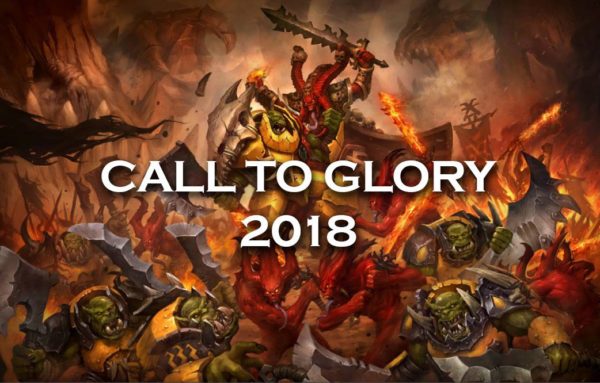
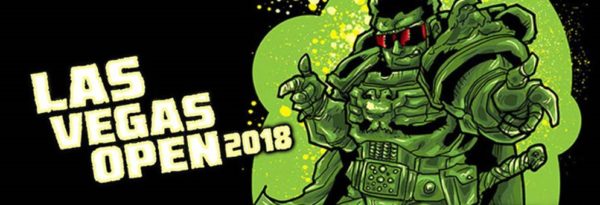


 7. Bill Souza – Maggotkin List
7. Bill Souza – Maggotkin List






